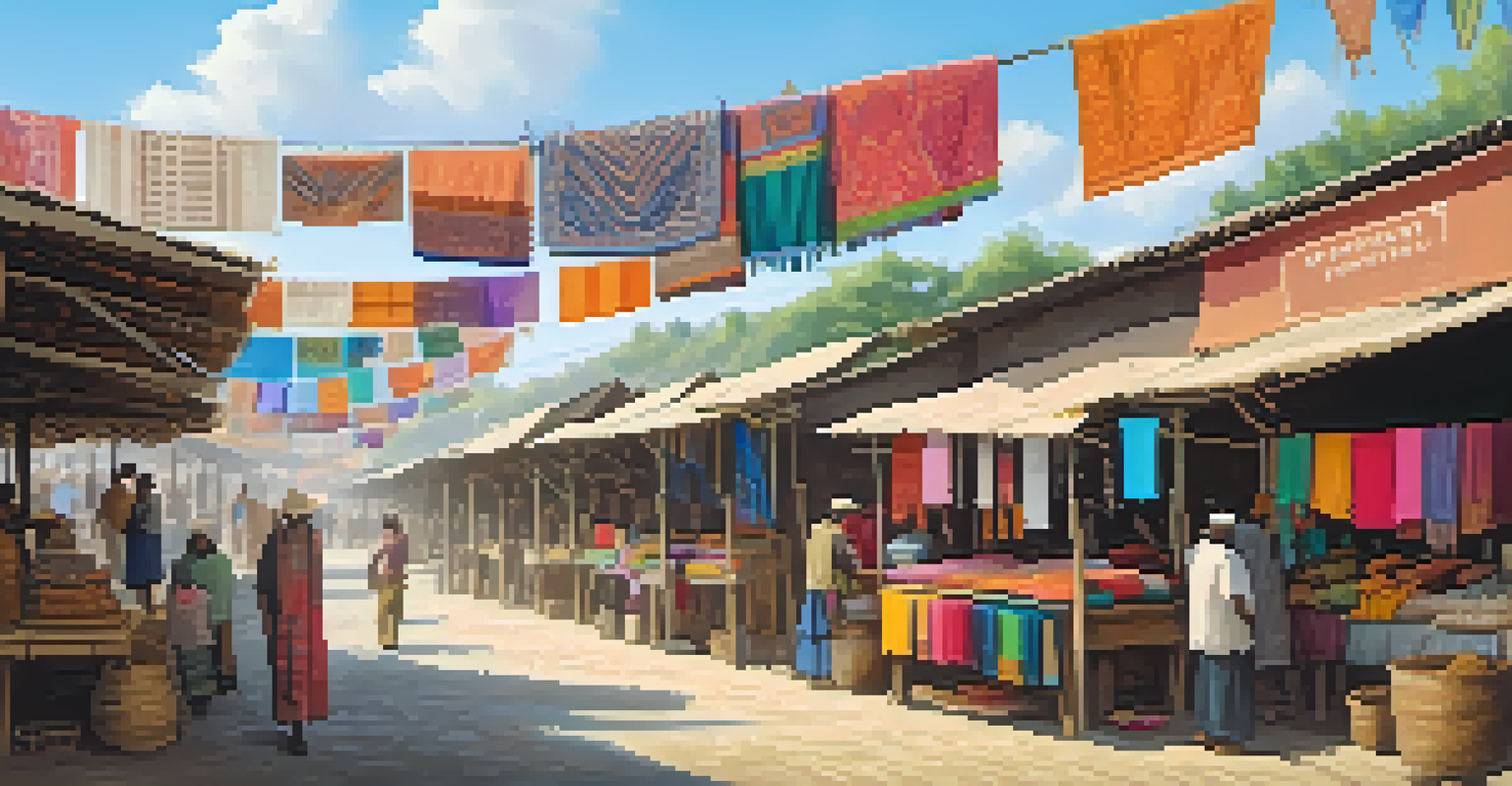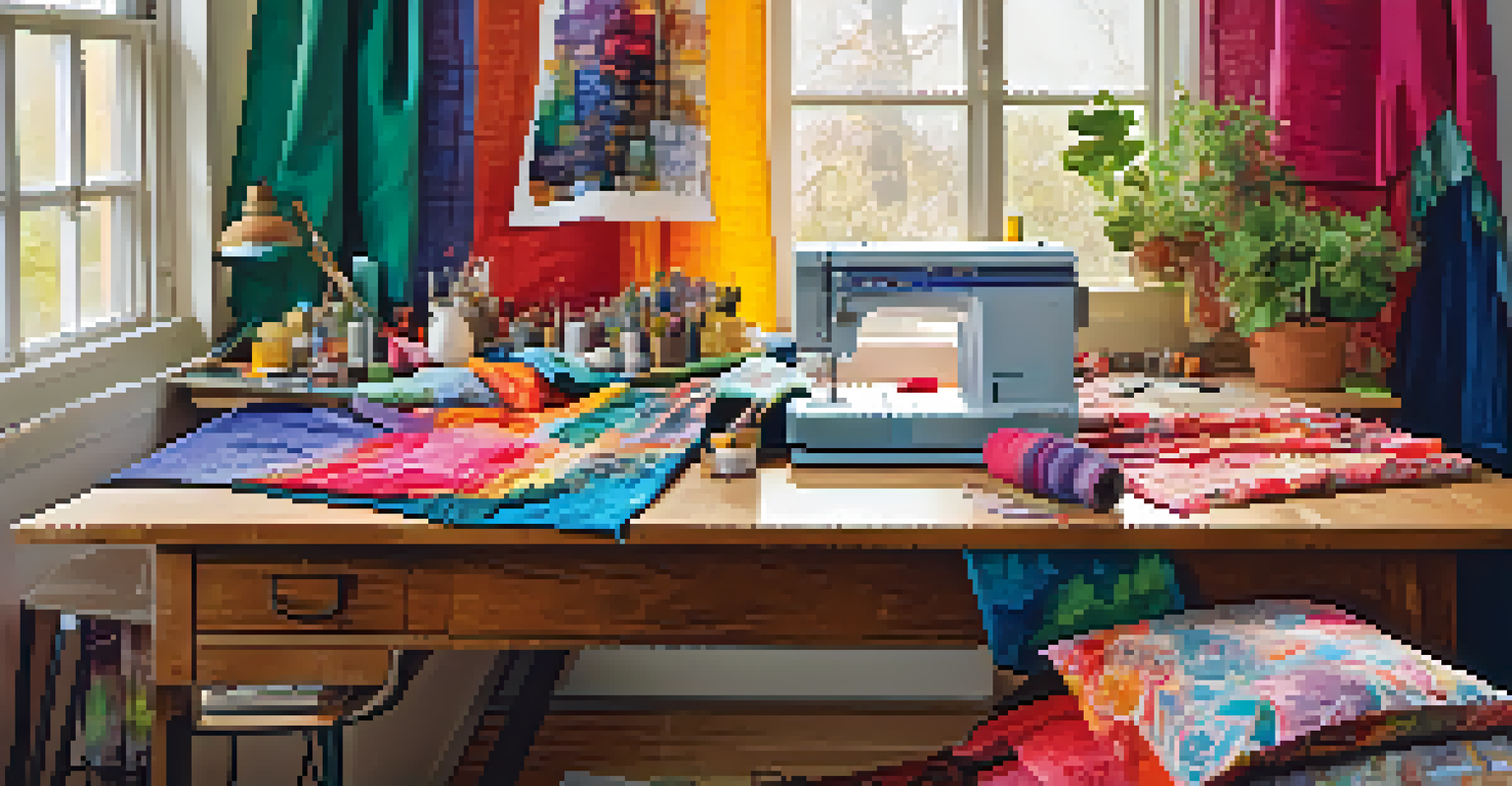Tips for Choosing Eco-Friendly Textiles in Home Design

Understand the Importance of Eco-Friendly Textiles
When designing your home, the choice of textiles can greatly impact the environment. Eco-friendly textiles are made from sustainable materials that reduce harm to the planet. By opting for these options, you're not just beautifying your space; you're also contributing to a healthier ecosystem.
The greatest threat to our planet is the belief that someone else will save it.
Think of eco-friendly textiles as the green superheroes of home decor. They often come from renewable resources like organic cotton, bamboo, or hemp, which require less water and chemicals than conventional fabrics. This means you can enjoy a stylish home while supporting sustainable practices.
Moreover, choosing eco-friendly textiles can enhance your indoor air quality. Many traditional textiles are treated with harmful chemicals that can off-gas and affect your health. By selecting natural options, you’re creating a safer environment for you and your family.
Look for Certifications and Labels
When shopping for eco-friendly textiles, certifications can be your best friend. Look for labels like GOTS (Global Organic Textile Standard) and OEKO-TEX, which ensure products meet specific environmental and safety criteria. These certifications provide peace of mind, confirming that the textiles are truly eco-friendly.

For instance, a GOTS certified fabric means it’s made from organic fibers and follows strict environmental and social criteria throughout its production. This transparency helps you make informed choices and supports brands that prioritize sustainability.
Choose Eco-Friendly Textiles
Opting for sustainable textiles enhances your home’s beauty while contributing to a healthier planet.
Moreover, many brands are now highlighting their eco-friendly practices, so don’t hesitate to ask questions or conduct a little research. Understanding the certifications can empower you to choose textiles that align with your values and contribute to a sustainable future.
Consider the Material's Sustainability
Different materials have varying levels of sustainability, so it’s essential to know your options. Natural fibers like organic cotton, linen, and wool are generally more sustainable than synthetic materials like polyester. These natural options are biodegradable and often produced with fewer chemicals.
What we’re really talking about is a wonderful world, a world where we can be healthy and safe and where the environment will be preserved for our children and their children.
Another sustainable choice is bamboo, which grows rapidly and requires minimal resources. However, be cautious of bamboo textiles that have undergone extensive chemical processing, as this can negate their eco-friendliness. Always check the production process behind the material.
Additionally, consider the lifecycle of the textiles you choose. Opt for materials that are durable and can withstand wear and tear, reducing the need for frequent replacements. This not only saves money but also minimizes waste, making your home design more sustainable.
Prioritize Local and Artisan Products
Supporting local artisans and manufacturers is a fantastic way to choose eco-friendly textiles. By purchasing locally made products, you reduce the carbon footprint associated with transportation. Plus, you’re often investing in higher-quality, unique items that tell a story.
Local artisans frequently use traditional methods and sustainable practices, contributing to the preservation of cultural heritage. These textiles often have a personal touch that mass-produced items lack, making your home feel more authentic and special.
Look for Certifications
Certifications like GOTS and OEKO-TEX ensure that the textiles you choose are genuinely eco-friendly and safe.
Additionally, consider visiting local markets or craft fairs where you can find handmade textiles. Not only does this support your community, but it also allows you to ask questions about the materials and production processes directly, ensuring they align with your eco-friendly goals.
Evaluate the Impact of Dyeing Processes
Dyeing processes can significantly affect the environmental impact of textiles. Conventional dyes often contain harmful chemicals that can pollute water sources and harm ecosystems. Choosing textiles dyed with natural or low-impact dyes can greatly reduce this negative effect.
Natural dyes, derived from plants and minerals, are not only better for the environment but also offer unique colors and variations. For example, fabrics dyed with indigo or turmeric can create stunning hues that enhance your home’s aesthetic without compromising sustainability.
Always inquire about the dyeing process when selecting textiles. Brands committed to eco-friendliness will be transparent about their methods, allowing you to make choices that support a cleaner environment.
Think About Longevity and Versatility
When selecting textiles, consider their longevity and versatility. Opt for fabrics that are durable and can adapt to various styles and uses in your home. This not only saves you money in the long run but also reduces waste, aligning with eco-friendly principles.
For instance, a high-quality linen or cotton fabric can be used for everything from curtains to cushion covers, allowing you to refresh your decor without needing new materials. Investing in timeless designs and colors can ensure that your textiles remain relevant and stylish for years.
Embrace Upcycling for Style
Upcycling old textiles not only reduces waste but also allows you to create unique decor that reflects your personal style.
Additionally, think about the care requirements for the textiles you choose. Fabrics that require less washing or are easy to maintain can help conserve water and energy, further contributing to your sustainable living goals.
Embrace Upcycling and Repurposing
Upcycling and repurposing existing textiles is a fantastic way to create an eco-friendly home. Instead of buying new fabrics, consider using old linens, curtains, or clothing to craft unique home decor items. This not only reduces waste but also adds a personal touch to your space.
For example, old t-shirts can be transformed into cozy pillow covers, while vintage sheets can become beautiful table runners. Embracing creativity in your home design allows you to express your style while minimizing your environmental impact.

Moreover, many DIY resources and communities focus on upcycling, providing inspiration and support. By engaging in these projects, you cultivate a mindset of sustainability and resourcefulness that can influence your overall approach to home design.